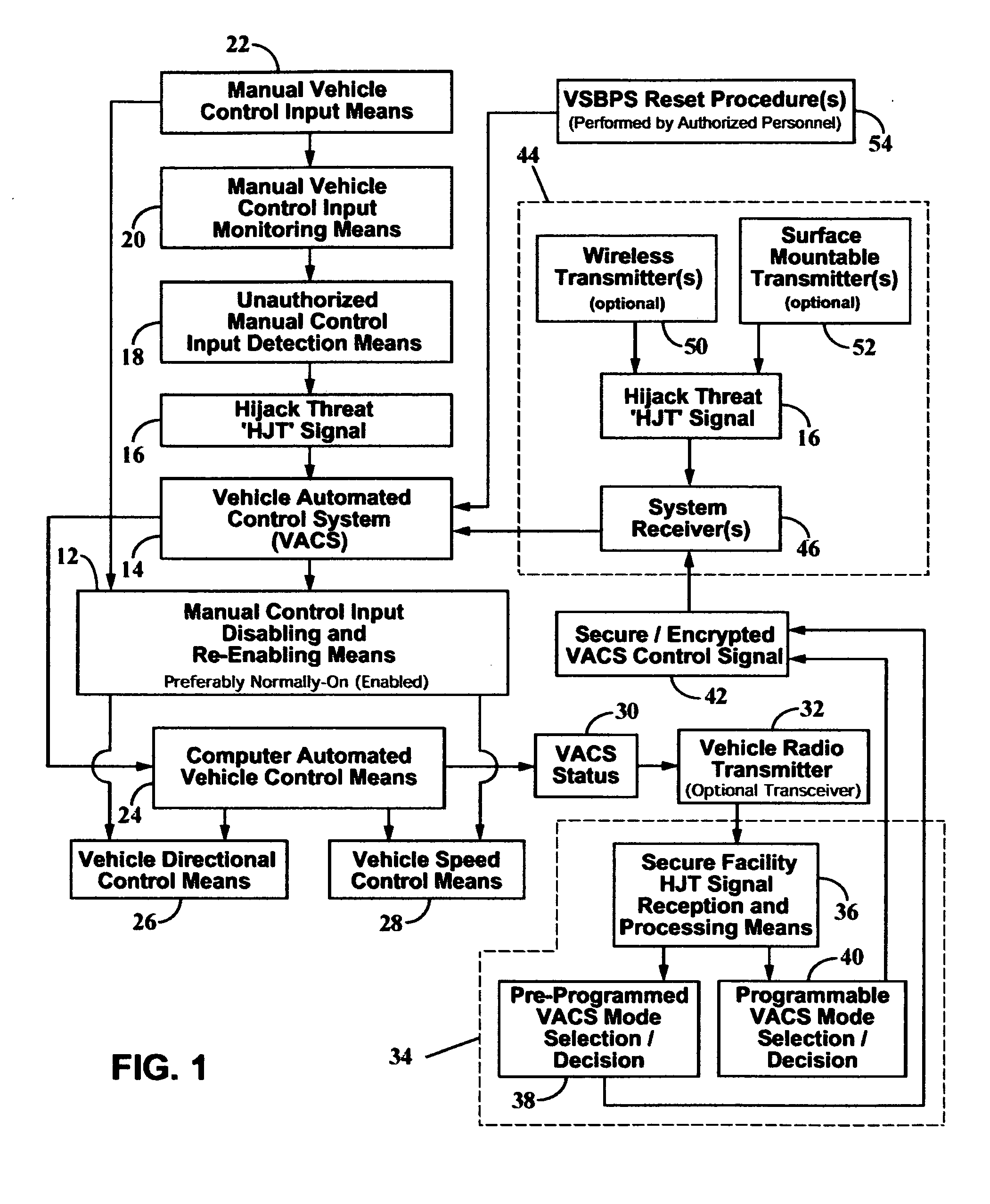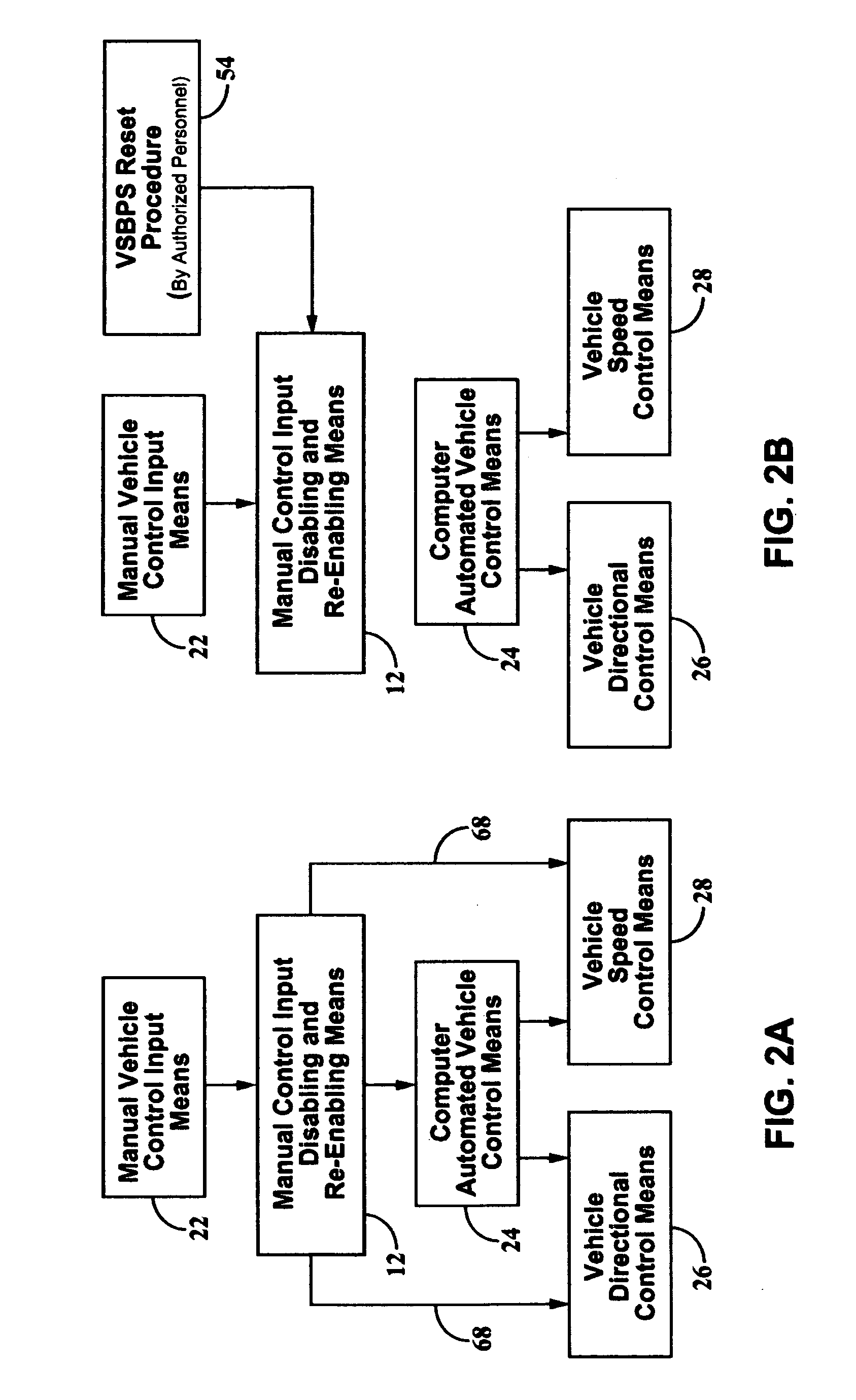System for safely disabling and re-enabling the manual vehicle control input of aircraft and other vehicles
a technology for aircraft and other vehicles, which is applied in the field of aircraft and other vehicles security, can solve the problems of not being given much consideration to flight, no aircraft security effort, and not being readily or economically retrofitted to the majority of non-fbw equipped commercial aircraft, and achieves the effects of less false-deployment reset flexibility, powerful impact on preventing aircraft (and trains or ships) suicide bombings, and easy transportation
- Summary
- Abstract
- Description
- Claims
- Application Information
AI Technical Summary
Benefits of technology
Problems solved by technology
Method used
Image
Examples
Embodiment Construction
[0120] In FIG. 1, a flow diagram of a preferred embodiment of the present invention depicts the components comprising a vehicle suicide-bombing prevention system 10, hereafter referred to as ‘VSBPS.’ The VSBPS has a manual control input disabling and re-enabling means 12 which is equipped to receive and is responsive to one or more control signals communicated from a vehicle automated control system 14, the latter is hereafter referred to as ‘VACS’14. The VACS 14 is equipped to receive one or more security-related signals or hijack threat signals 16 hereafter referred to as ‘HJT signal’16. In a first embodiment of the present invention, HJT signal 16 is preferably transmitted from one or more onboard wireless transmitters 50 and / or one or more onboard surface mountable transmitters 52, to one or more system security-related signal receiver(s) 46, the latter having a communications link with VACS 14. Preferably, transmitted HJT signals are transmitted as secure and / or encrypted signa...
PUM
 Login to View More
Login to View More Abstract
Description
Claims
Application Information
 Login to View More
Login to View More - R&D
- Intellectual Property
- Life Sciences
- Materials
- Tech Scout
- Unparalleled Data Quality
- Higher Quality Content
- 60% Fewer Hallucinations
Browse by: Latest US Patents, China's latest patents, Technical Efficacy Thesaurus, Application Domain, Technology Topic, Popular Technical Reports.
© 2025 PatSnap. All rights reserved.Legal|Privacy policy|Modern Slavery Act Transparency Statement|Sitemap|About US| Contact US: help@patsnap.com



